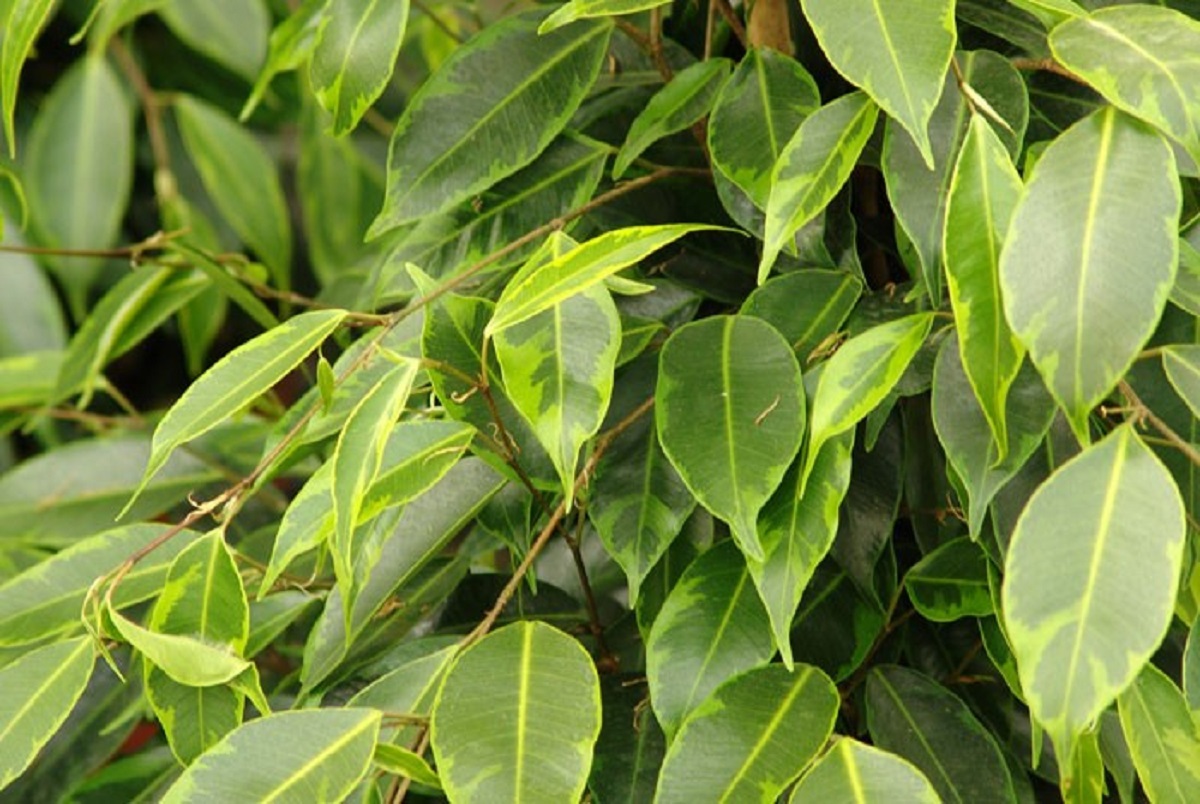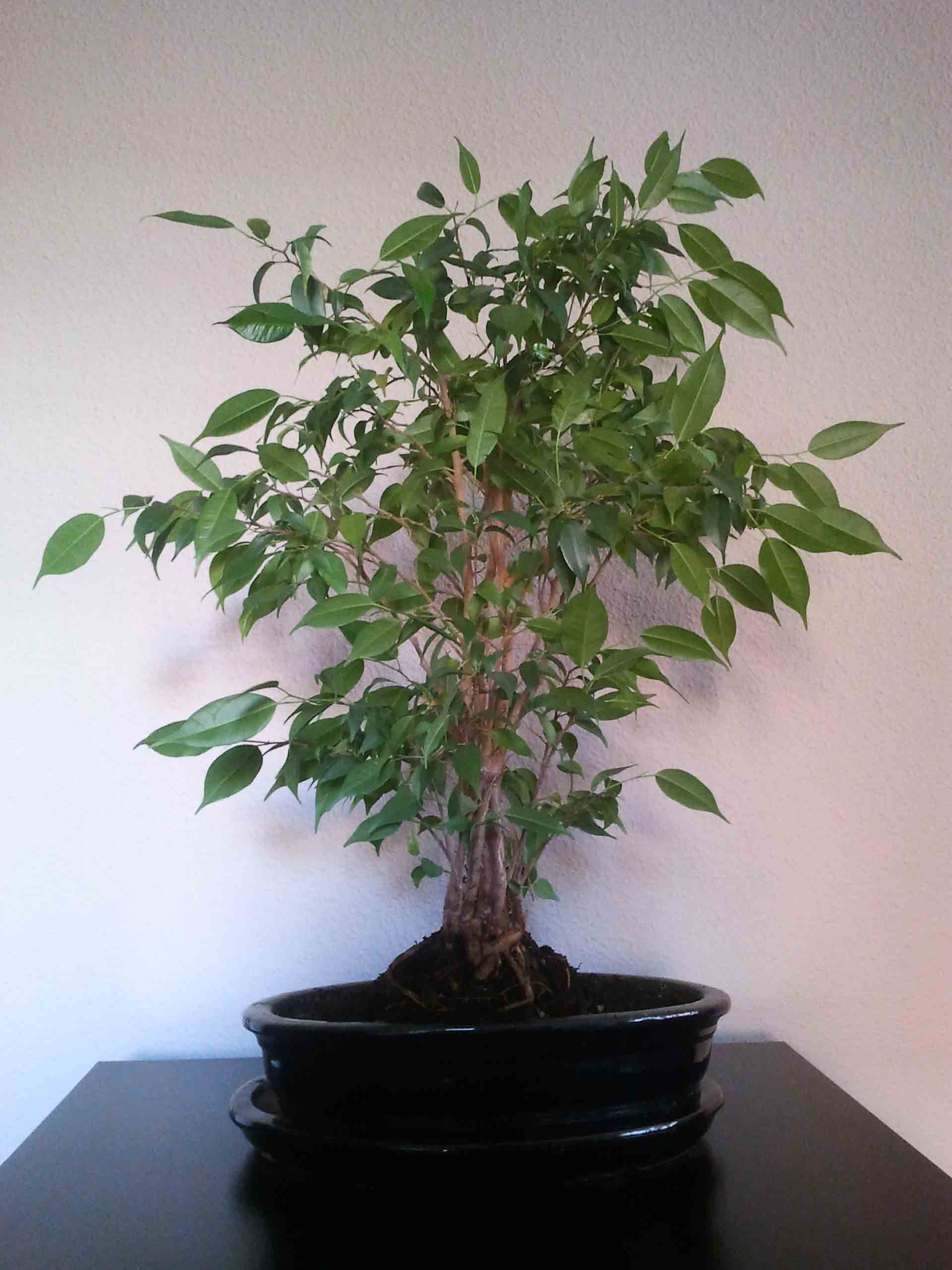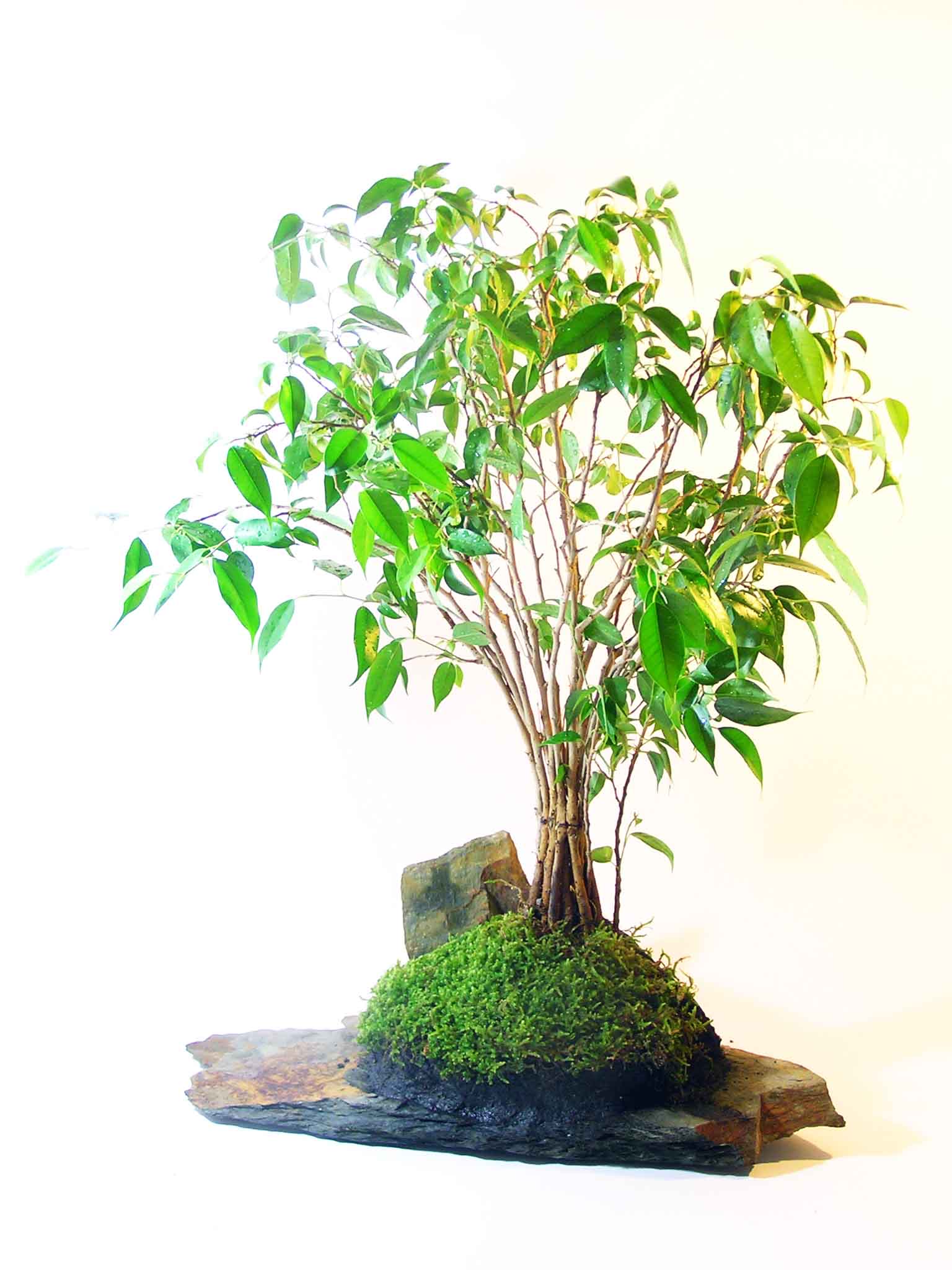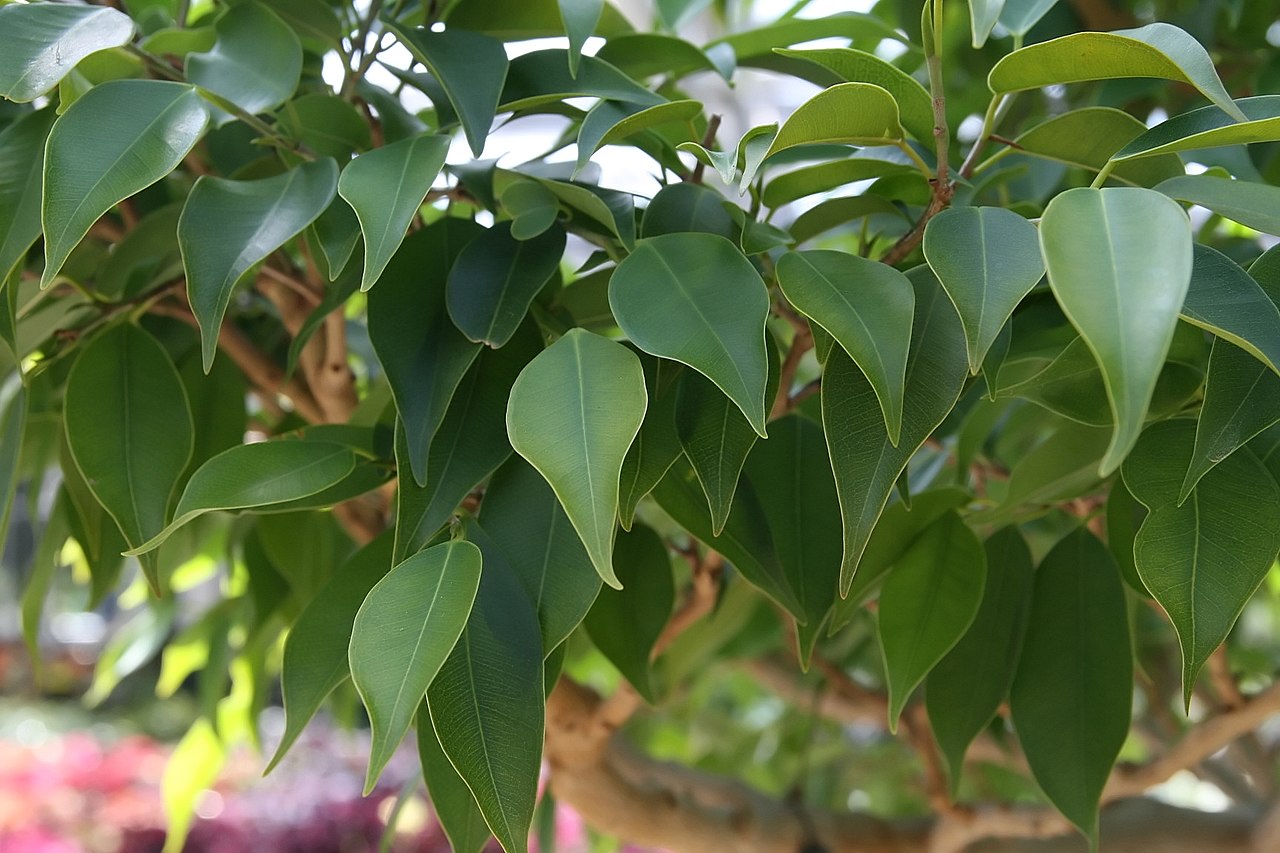
Cómo PODAR un FICUS Guía práctica de jardinería
Para podar el ficus benjamina sigue estos consejos y pasos: Recorta todas las ramas entre 2 y 5 cm con unas tijeras o tenazas, dependiendo del tamaño de tu ficus. Esta poda puede realizarse en torno al inicio de la primavera, o un poco antes, y ayudará a controlar el crecimiento de la planta y a darle una copa más tupida y densa.

Evolución Ficus Benjamina Defoliado, poda fuerte y Trasplante anual YouTube
The weeping fig tree (Ficus benjamina), also known as Benjamin fig tree or simply ficus tree, is a very popular and easy-to-care-for houseplant. Of all the species in the genus Ficus, this one is the best for indoor cultivation. Learn how to care for a weeping fig indoors in this blog. Buy Ficus Plants Online Ponytail Palm Tree $ 34.95 Variegated Snake Plant Shrub $14.95 ZZ Plant Shrub $ 24.95.
LA VENTANA DE JAVIRULI PLANTAS DE INTERIOR (49) PODA DE FICUS BENJAMINA
Ficus benjamina needs a moderate amount of water, so only water your weeping fig once the soil feels quite dry. Simply use your finger to check whether the top layer of soil is still moist. If the soil feels dry in the top 2 to 3 cm, water the plant. If the growing conditions are good, you will usually need to water your Benjamin fig about once.

CÓMO Y CUÁNDO PODAR UN FICUS EN MACETA EN POCOS PASOS
Use organic and mineral fertilizers that can be bought in special stores. Nourish the plant once a month from October to April. If you wonder where to place the pot with ficus, I recommend keeping ficus benjamina outdoors in summer, for instance in the garden or on the balcony. However, avoid direct sunlight.

Proyecto ficus benjamina 2nd parte, poda de limpieza y reposición de 2 plantones nuevos. YouTube
Ficus Benjamina, commonly known as the Weeping Fig, is a popular indoor plant that is loved for its elegant and graceful foliage. With a lifespan of 20 to 50 years, they're renowned for their durability and longevity. This graceful, elegant plant has slender branches that arch gracefully from a light gray trunk and dense, glossy dark leaves..

Cuidados del ficus benjamina Poda, riego, abono y más
The Ficus Benjamina plant (Weeping Fig) is known for its dreamy tuft of glossy leaves and branches and trunk that are often trained into elegant shapes. In its native environment, the Ficus Benjamina can grow up to 60 feet. Indoors, the Ficus Benjamina tree can be cultivated as a small bonsai tree or larger houseplant, growing up to 6 feet indoors.

¿Cómo PODAR FICUS correctamente? Paso a paso
The weeping fig (Ficus benjamina), also known as the Benjamin fig, tropic laurel, Java fig, Java tree, small-leaved rubber plant or just plain ficus, has arching stems of small, glossy green or variegated leaves. In time it grows into a small, elegant tree that can reach around 1.8m tall and makes an impressive focal point. It's an excellent air purifier, too.

Cómo podar un Ficus benjamina Jardineria On
Cómo podar un ficus benjamina. La poda del ficus, si se hace de manera regular cada 2 o 3 meses, se convierte en un trabajo bastante sencillo, ya que solo consiste en una poda de mantenimiento y de formación. Por lo que no toma mucho tiempo. Una vez que tengas tu tijera para podar y tus guantes puestos, es momento de comenzar a podar tu ficus.

¿Cómo PODAR FICUS correctamente? Paso a paso
La poda es una técnica necesaria para mantener la salud y estética del ficus benjamina. Para realizar una poda adecuada, se deben seguir los siguientes pasos: 1. Identificar las ramas muertas o enfermas y retirarlas con cuidado. 2. Seleccionar las ramas más largas y cortarlas en un punto justo encima de un nudo. 3.

Podar Ficus Benjamina [Importancia, Época, Herramientas, Consideraciones Y Pasos]
Ficus benjamina, commonly known as weeping fig, benjamin fig or ficus tree, and often sold in stores as just ficus, is a species of flowering plant in the family Moraceae, native to Asia and Australia. It is the official tree of Bangkok.The species is also naturalized in the West Indies and in the states of Florida and Arizona in the United States. It is one of the most common trees in Israeli.

Poda controlada de Ficus benjamina ayuda
En este video te enseño cuándo y como podar a tu Ficus Benjamina. También aprendrás cuidados básicos sobre el mantenimiento y otros consejos que harán lucir.

Poda controlada de Ficus benjamina ayuda
5. Poda el ficus durante la primavera si quieres que aumente su volumen. Si has notado áreas demasiado escasas en el ficus, una poda puede estimular la formación de ramas. Prueba a podar el ficus a principios de la primavera para estimular el crecimiento de ramas y follaje durante la próxima temporada.

Cómo podar un ficus benjamina Guía con pasos y consejos
Soil. Weeping fig, Ficus benjamina, is one of the most elegant indoor plants. Its graceful weeping branches bear glossy dark green or variegated leaves. It's ideal for growing in a well-lit room or conservatory. For best results grow Ficus benjamina in a loam-based compost in full light, but not direct sun. From spring to summer feed every two.
LA VENTANA DE JAVIRULI PLANTAS DE INTERIOR (49) PODA DE FICUS BENJAMINA
Weeping fig (Ficus benjamina's common name is known as the ficus tree) grows as a large broadleaf evergreen tree in tropical and subtropical climates, but it is more often grown as a houseplant in homes, offices, and featured in interior commercial landscaping. The ficus tree is known for its longevity, living between 20 to 50 years.

¿Cómo podar un Ficus? Jardineria On
Ficus benjamina, commonly called weeping fig, is native from India to northern Australia. It is a broadleaf evergreen tree that grows to 50' tall. It is widely grown in the tropics as an ornamental tree or hedge. For many years, it has been an extremely popular indoor houseplant because of its attractive shape and tolerance for a variety of.

Ficus Benjamina (46 Foto) en el hogar cuidados de riego, poda y propagación — Diseño Ficus
The Ficus Benjamina enjoys being kept under bright indirect or filtered light. This plant cannot survive in temperatures below 65 degrees Fahrenheit (18.3 degrees Celsius) and must always be kept in high humidity levels of up to sixty percent. It can be grown outdoors in USDA Zone 10 to 12.